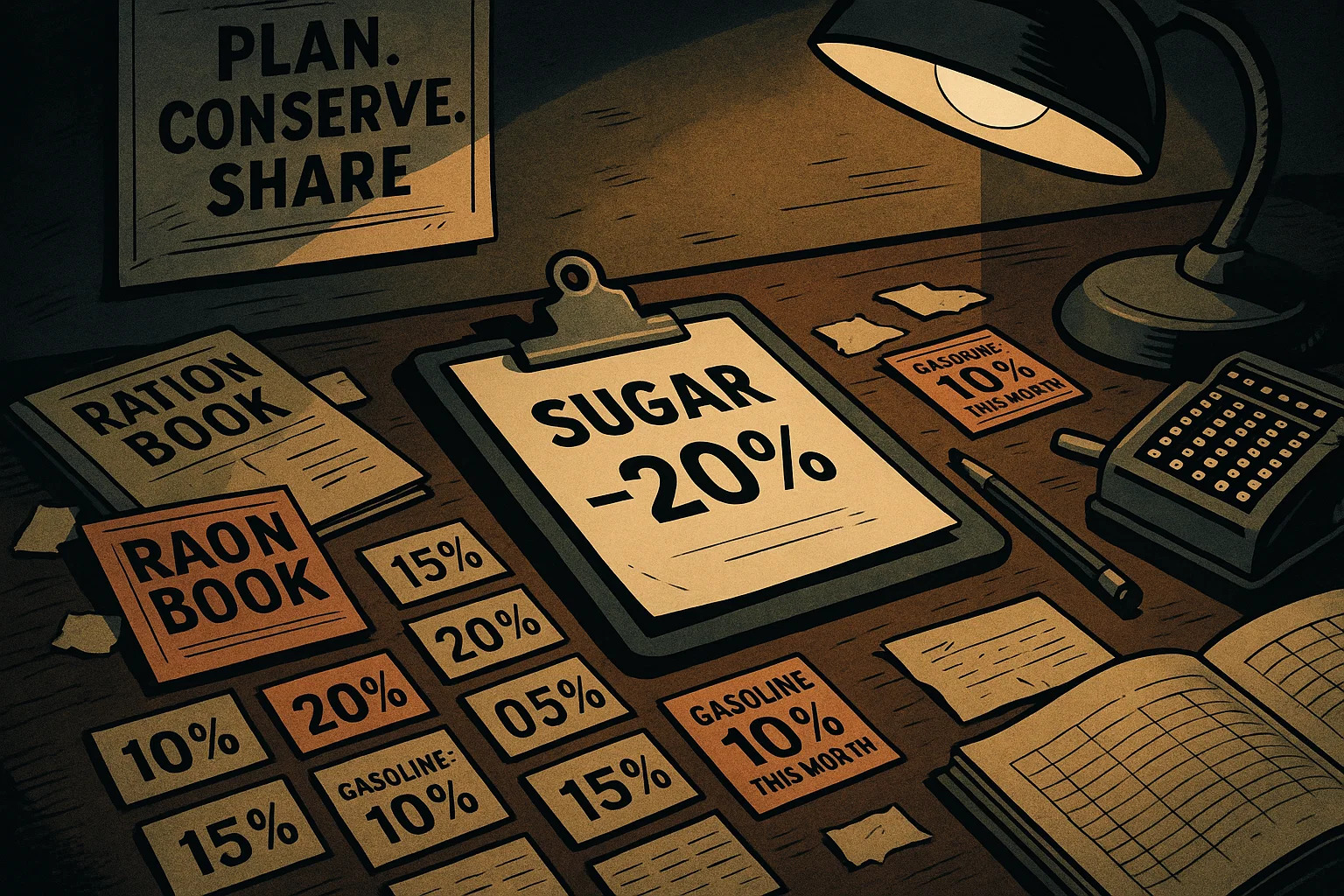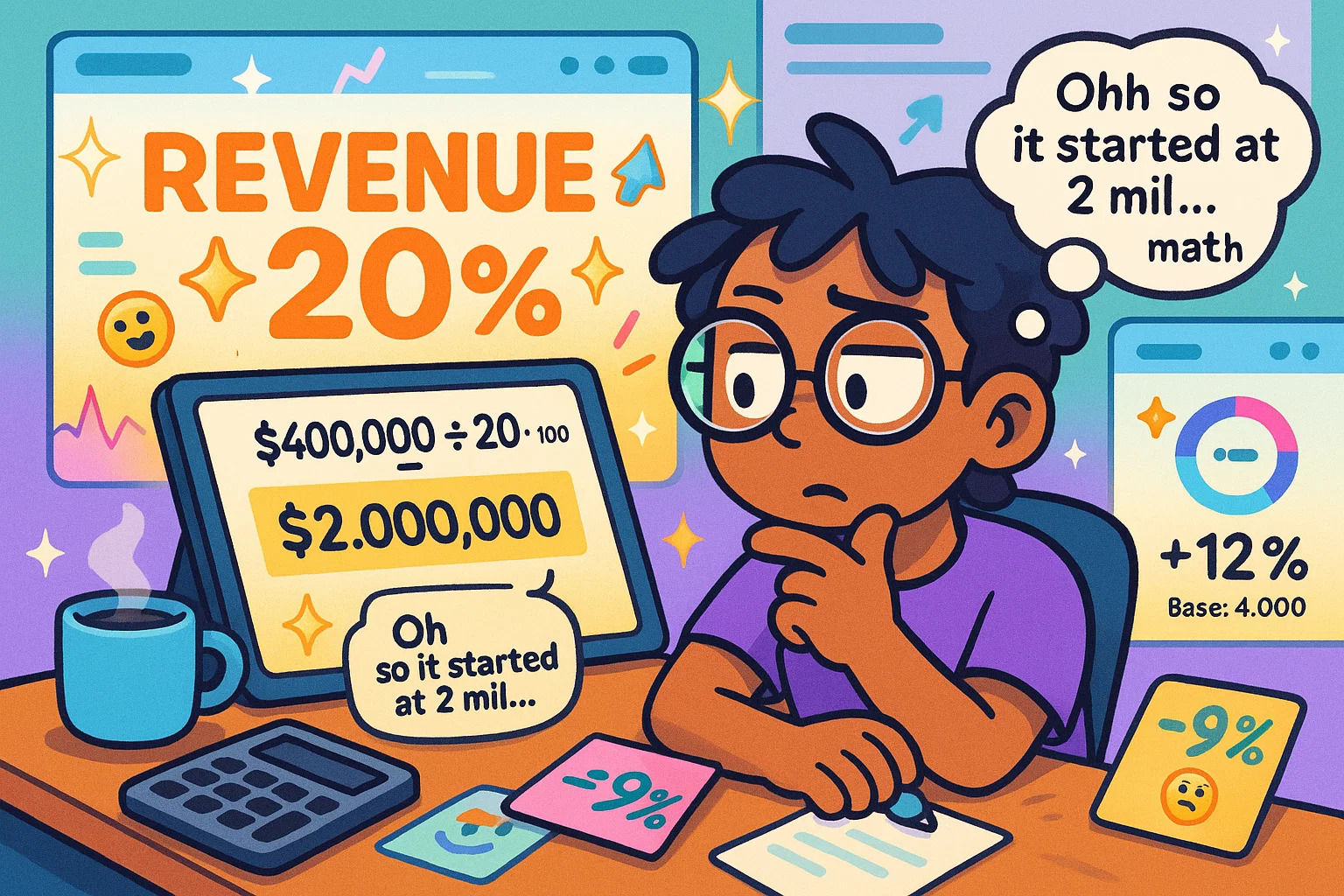Ever looked at a stat and wondered, “But...what’s the full picture?” That’s what base value calculations help uncover. Whether you’re figuring out the original price before a 25% discount or estimating a total population based on a known 15%, the base value is what gives percentages context.
What “Base Value” Really Means in Percent Math
We hear percentages thrown around constantly — “You saved 40%,” “Only 18% responded,” or “This accounts for 5% of your score.” If you're looking to crunch those numbers directly, a Percentage Calculator can do the quick work.
But what’s often missing is the base value — the total amount from which that percentage was calculated. And without it, those percentages are just floating in space.
Let’s say you know 30% of something is 90. But 30% of what? That "what" is your base value. It’s the full number the percentage is based on.
Here’s the formula that does the job:
Base Value = (Part ÷ Percentage) × 100
Since percentages are parts out of 100, this formula flips that logic and helps you get back to the whole.
A simple example: If 90 is 30% of a number:
Base Value = (90 ÷ 30) × 100 = 3 × 100 = 300
So, 90 is 30% of 300.
Or with another twist: say you only know that 24 equals 20% of something. Again:
Base Value = (24 ÷ 20) × 100 = 1.2 × 100 = 120
You can also write this with Unicode fraction formatting for clarity:
Base Value = (¹²⁴⁄₂₀) × ¹⁰⁰ = 120
The logic here is straightforward: If X% equals Y, then divide Y by X% (as a number) and multiply by 100.
💡 Quick Fact: The word percent comes from Latin per centum, meaning "by the hundred." The idea of comparing numbers in relation to 100 dates back to early bookkeeping systems in the 15th century.
The base value gives context. Without it, a 25% discount might seem generous — until you realize it’s 25% off 20not200. It's the difference between saving 5and50.
The Wartime Economy and Rationing Math
During World War II, numbers weren’t just about dollars — they were about survival. The U.S. Office of Price Administration distributed ration booklets with fixed percentages of goods people could consume: sugar, meat, gasoline, even shoes. But the coupons themselves didn’t show total allowed quantities — just a fraction of them.
So how did households figure out how much they could actually use in a week or month? That’s where base value math stepped in.
Let’s say a household had a coupon for 20% of their monthly sugar allowance, and that coupon said they could get 1.5 pounds. To find the full ration:
Base Value = (1.5 ÷ 20) × 100 = 7.5 pounds per month
Or using Unicode formatting:
Base Value = (¹⋅⁵⁄₂₀) × ¹⁰⁰ = 7.5
This helped families plan, conserve, and avoid penalties for overuse. The calculation might’ve seemed small, but its impact was large — guiding how people ate, traveled, and lived through uncertain times.
💡 Fun Fact: During WWII, even Franklin D. Roosevelt’s household was issued ration coupons — though the President reportedly never used them. Still, every citizen was expected to understand and follow their percentage allotments.

What a “20% Jump” Actually Means in Business
Scroll through any investor report or marketing deck, and you’ll see it: “Revenue up 20%,” “Engagement increased by 15%,” or “Customer churn dropped 10%.” Sounds impressive — but without knowing the base value, it’s hard to tell just how big that jump really is. The Percentage Change Calculator is a great sidekick for breaking down growth metrics like these
Let’s break it down.
If a company says its revenue rose by 20% and that increase equals $400,000, what’s the original revenue figure?
Base Value = (400,000 ÷ 20) × 100 = 2,000,000
So the original revenue before the increase was $2 million.
Marketers do this, too. If your CTR (click-through rate) improved by 12% and that equals 480 additional clicks, then:
Base Value = (480 ÷ 12) × 100 = 4,000
That’s 4,000 clicks originally — crucial info when planning budgets or ad spend.
This kind of reverse calculation turns flashy percentages into meaningful decisions.
📘 Did You Know? The U.S. Bureau of Economic Analysis regularly reports growth and contraction as percentages — but behind every percentage point is a dollar amount you can reverse-calculate to see the real economic impact.
Breaking Down the Numbers Behind the Percentage
Sometimes you’re given the percent and the part — and you need to uncover the full value. This comes up in business, statistics, even in school grading. The math is simple, but the implications are big.
Let’s say someone tells you that 198 is 22% of a number. Here’s how to get the total:
Base Value = (198 ÷ 22) × 100 = 9 × 100 = 900
Or with Unicode fraction formatting: Base Value = (¹⁹⁸⁄₂₂) × ¹⁰⁰ = 900
Decimal percentages work the same way. If 8.5% of a number is 42.5, you calculate:
Base Value = (42.5 ÷ 8.5) × 100 = 5 × 100 = 500
Or written another way: Base Value = (⁴²⋅⁵⁄⁸⋅⁵) × ¹⁰⁰ = ⁵⁰⁰
Whether you're reverse-engineering a grade on a final exam or trying to estimate full survey participation based on partial data, the math stays the same.
🎯 Pro Tip: These formulas are especially handy when analyzing percentages in spreadsheets or analytics dashboards. It’s not just about the increase — it’s about the scale.
For more ways to manipulate numbers like this — including fractions, ratios, and percent conversions — explore the Math Calculator page. It’s a helpful companion for working with raw data.


